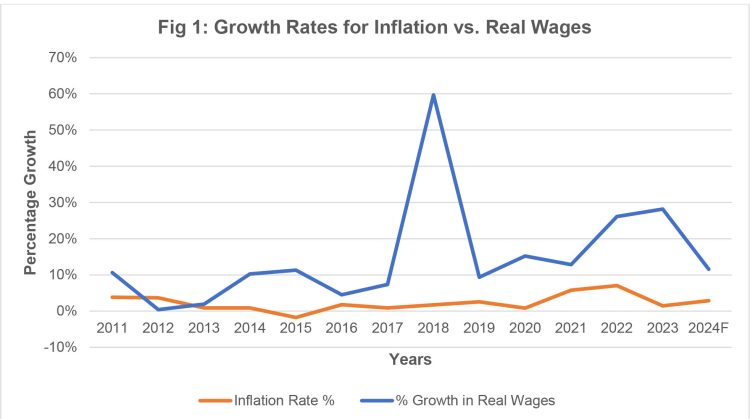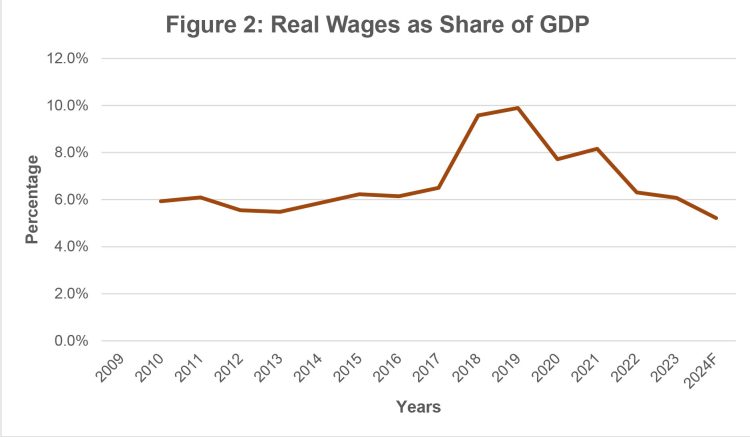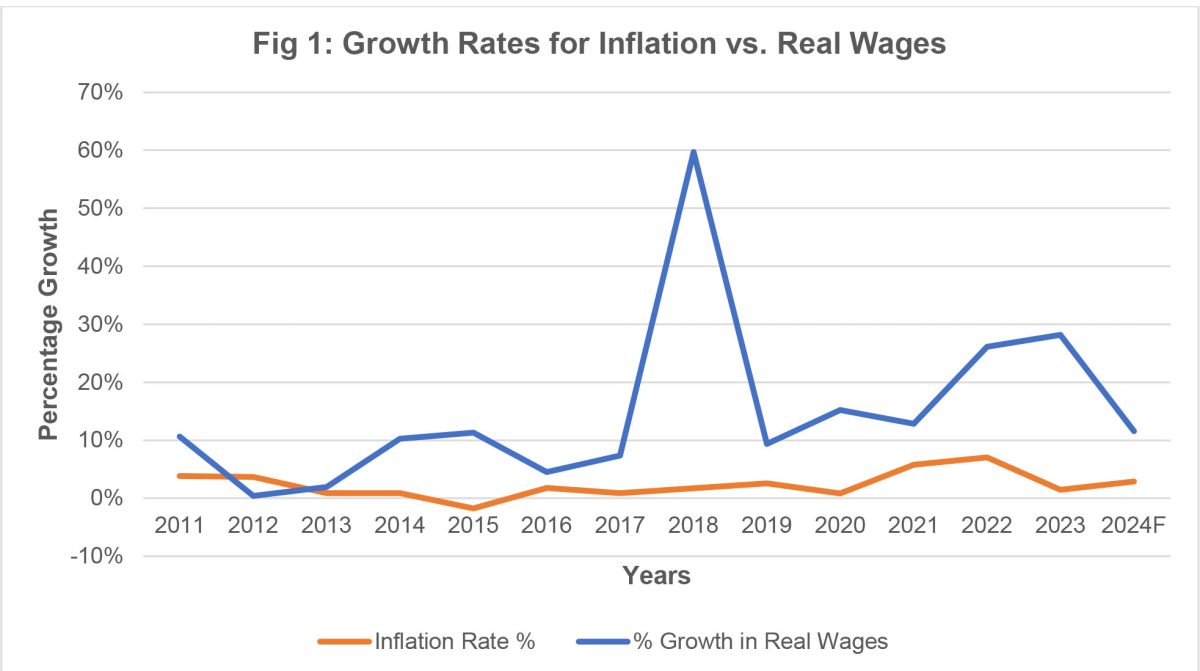Dear Editor,
Too often in the cost of living (CoL) debate and discussion at the national level, there is a conflation with inflation and cost of living. Although related, there is a slight distinction between the two measurements. The inflation rate is measured by the Urban Consumer Price Index (CPI), which is used to measure changes in prices over time. A cost-of-living index (COLI), on the other hand, is used to measure differences in prices across geographies, and the basket of items in a COLI may vary from the basket of items captured in the CPI. In Guyana, it should be noted that we do not have a COLI.

Source: Author’s calculation based on Bank of Guyana Data, and Budget Estimates.
The base year for the CPI is 2009 (where December 2009=100) according to the CPI data reported in the Bank of Guyana Annual Report, 2023. Thus, after accounting for the estimated inflation rate for the year 2024, the CPI will close the year with an index of 143. This means that since 2009, consumer prices have increased by 43%. Conversely, it would be interesting to note that real wages for that period, have increased by 6.5 times or 539% (2009-2024).
In absolute terms, in 2009, real wages based on income tax data, amounted to about $40 billion, which rose to $237.4 billion at the end of 2023, and is projected to reach $265 billion by the end of 2024.

Source: Author based on MoF data
Further, as shown in figure 2 above, real wages as a share of GDP averaged nearly 7% annually during the period 2009-2023/24. It can be concluded, therefore, that at the aggregate level, real wages have increased at a rate that has far outstripped rising consumer prices over the last fifteen (15) years.
Sincerely,
Joel Bhagwandin








